Our Crush Story continues and is dedicated to the alternative ingredients which are used to produce Crush and the way it follows the principles of the circular economy. A story in which each chapter explains how Favini is a part of this ethical chain that takes natural products from the agri- industrial sector and transforms them in an environmentally sustainable way into a valuable new product.
Known for its vivid colour and its unmistakable scent, lavender is one of the most distinctive and sought-after crops. It is used as an ornamental plant, to make perfumes, cosmetic and pharmaceutical products as well as in aromatherapy. Are you ready to discover the life cycle of lavender?
Thanks to the valuable characteristics of the perfume of its flower heads and stems, the Lavender plant has always had a wide appeal for perfume, so much so that it is from the end of the XVI century that we first find documented information on its cultivation techniques.
The processing of lavender to produce essential oils generates waste and by-products that can become an opportunity for both the economy and the environment. How?
Let’s find out together through the lavender life cycle, the Crush Story from flower to the ecological paper of Favini Crush Lavender.
Lavender Crush Story: a circular economy story from the flower fields to eco-sustainable paper
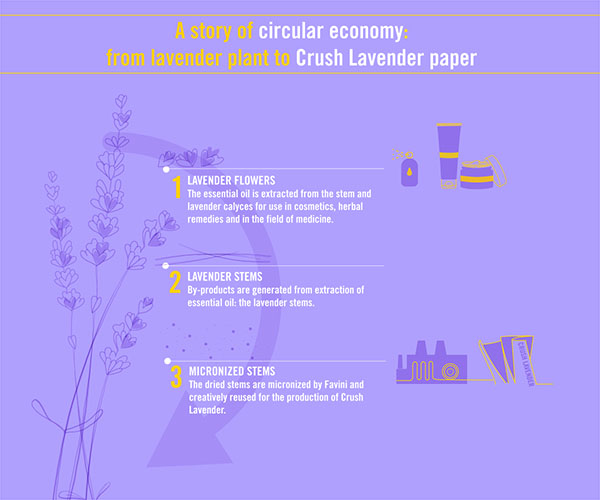
The lavender plant, like so many other things, came to Italy thanks to the ancient Romans. They used it during long intercontinental journeys taking advantage of the numerous benefits of the plant.
Today lavender, thanks to its versatility, is cultivated in many areas of Italy to produce essential oil.
The flower heads and stalks are harvested at the end of flowering period and are used to obtain the essence of lavender. The essential oil content in the plant varies from about 0.5% to about 2%. It is mainly contained in oil-bearing glands that are located between the grooves of the calyces from which the essential oil is extracted.
Lavender essential oil is used in cosmetics, for the production of creams, soaps and body products, as well as in the field of medicine and herbal remedies.
Waste and by-products are generated from the extraction of essential oil. At this point Favini intervenes, using the main by-product of the essential oil production, which is the stem of the lavender plant, revaluing it from a waste material into a valuable raw material for the production of high quality ecological papers.
Crush Lavender has been created as the first paper to be made with by-products taken from the agri-industrial processing of lavender using it to substitute up to 15% of tree cellulose. In addition to the by-product of lavender, we also use the process residue from grape, cherry, citrus, corn, olive, coffee, kiwi, hazelnut and almond.
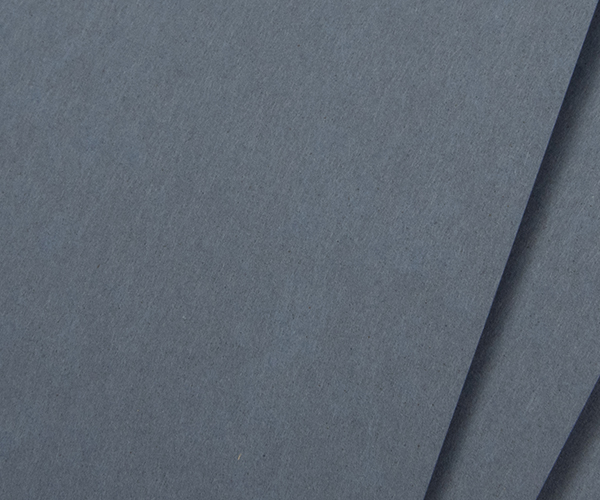
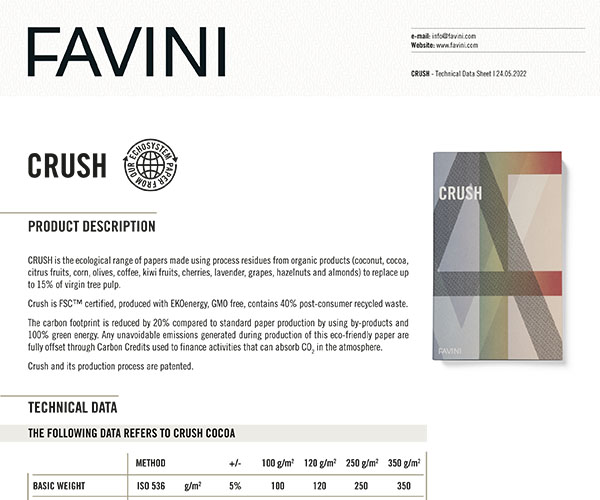
Why does Crush Lavender paper not smell? The reason is related to the fact that Favini chooses agri-industrial by-products that are at the end of their life cycle. In the case of lavender, the essential oil that gives its specific fragrance has already been extracted from the residue.
Crush Story Lavender continues: the onward chain
The chain does not end with Crush, in fact the Favini paper created by re-using by-products of lavender processing is a recyclable material. Crush, after its use, may be easily recycled to continue its life in successive production cycles in accordance with a circular model.
Crush paper is suitable for creating various applications, including luxury packaging, brochures, stationery tags, notebooks, cards, labels and creative projects.
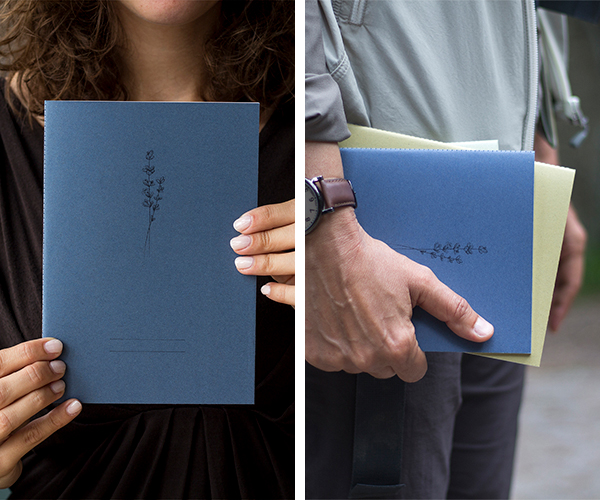
Papierowe Sztuki created handmade notebooks inspired by the “ingredients” of the Crush paper. Each cover has an illustration that brings to mind the special ingredient of the agri-industrial by-product used to produce the paper.
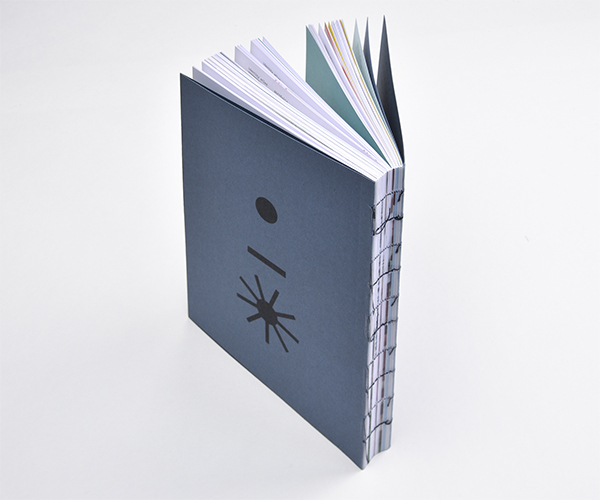
Crush Lavender was also chosen by Identity Atlas to make the cover of this publication.
For inspiration on Crush to produce your own creative projects see Crush’s Pinterest board.
Have you used our ecological Crush paper and would you like to share the result on our social media feed? Contact us at [email protected] with your piece of circular economy history.
Continue to follow Crush Story:
- Crush Story: from citrus fruit to paper
- From bean to Crush Coffee
- From cherry tree to Crush Cherry paper
- From corn crop to Crush paper
- From vineyard to Crush Grape
- From nut kernels into Crush paper
- From field to Crush Barley
- From kiwi fruit to the ecological paper Crush
- From olive grove to the ecological paper Crush
- From the bean to Crush Cocoa
- From coconut to paper


